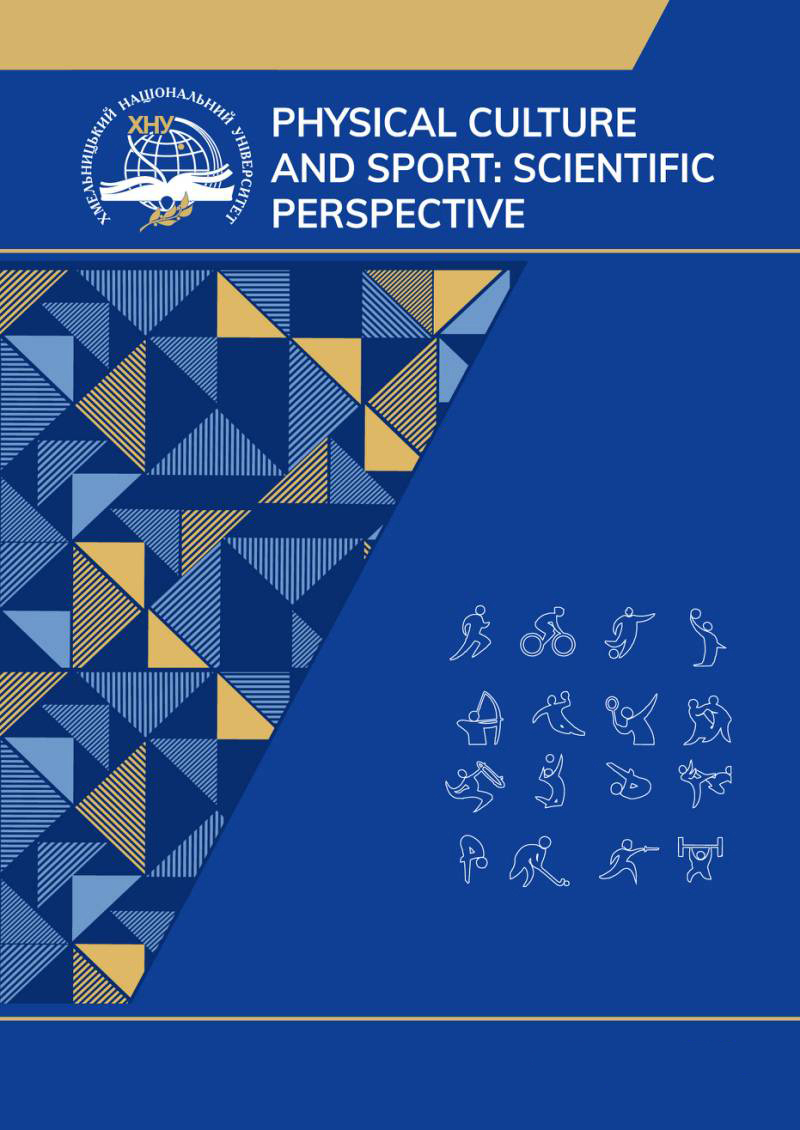ФІЗИЧНА ТЕРАПІЯ СПОРТСМЕНІВ З ТЕНДИНІТОМ ЗВ’ЯЗКИ НАДКОЛІННИКА
DOI:
https://doi.org/10.31891/pcs.2024.3.12Ключові слова:
тендиніт зв’язки наколінника, фізична терапія спортсменів, реабілітація, коліно стрибуна, зміцнення м’язівАнотація
У статті розглянуто питання фізичної терапії спортсменів з тендинітом зв’язки надколінника. Встановлено, що тендиніт зв’язки наколінника є поширеною проблемою серед спортсменів, особливо у тих видах спорту, що передбачають стрибки та різкі зміни напрямку руху. Визначено, що фізична терапія є одним з основних методів лікування означеної патології, що підтверджується відповідними науковими розвідками. Проведено всебічний аналіз українських та зарубіжних досліджень ефективності різних методів фізичної терапії тендиніту зв’язки наколінника серед спортсменів з різним рівнем фізичної підготовки, таких як: вправи на зміцнення м’язів, розтяжка, масаж та інші методи. Розглянуто методи лікування тендинопатії наколінника, виділені зарубіжними науковцями, що передбачали відпочинок, модифікацію активності, протизапальні препарати, ін’єкційну терапію, тейпування, ексцентричні вправи, екстракорпоральну ударно-хвильову терапію, черезшкірний електроліз та хірургію, а також методи, запропоновані українськими дослідниками – кінезіотейпування, лікувальну фізкультуру, ударно-хвильову терапію, плазмоліфтинг, медикаментозну терапію та ін’єкції кортикостероїдів. Виділено додаткові методи, які можуть бути результативними при фізичній терапії тендиніту зв’язки наколінника: масаж, який покращує кровообіг, зменшує набряк і спазм м’язів, мануальну терапію, яка сприяє відновленню рухливості суглобів і м’яких тканин, лазеротерапію, застосування якої зменшує запалення та прискорює процеси регенерації. Також розглянуто профілактичні методи, використання яких сприятиме запобіганню виникнення тендиніту зв’язки наколінника у спортсменів, висвітлені в публікаціях зарубіжних та вітчизняних науковців. Згідно з українськими дослідженнями встановлено, що профілактика тендиніту зв’язки наколінника включає: розминку перед тренуваннями для підготовки м’язів до навантаження, поступове збільшення навантаження (з уникненням різких стрибків у тренувальному навантаженні), зміцнення м’язів стегна завдяки регулярним силовим тренуванням та правильну техніку виконання вправ для уникнення перенавантаження сухожилля. Відповідно до зарубіжних досліджень, у якості найпоширеніших профілактичних методів тендиніту зв’язки наколінника розглянуто статичне розтягування, вправи для стабільності ядра, ортез стопи, амортизаційні устілки та замісну гормональну терапію у жінок. Акцентовано увагу на тому, що раннє втручання і початок фізичної терапії збільшують шанси на повне відновлення організму спортсмена з тендинітом зв’язки наколінника.
Посилання
Bahr MA, Bahr R. Jump frequency may contribute to the risk of jumper's knee: a study of interindividual and gender differences in a total of 11,943 jumps video recorded during training and matches in young elite volleyball players. Br J Sports Med. 2014;48(17):1322-1326.
Bas O. Kinesiological taping as a means of physical therapy for lymphostasis. Bulletin of the Carpathian University (physical education). Ivano-Frankivsk. 2021;27(28):13-17.
Cummings K, Skinner L, Cushman DM. Patellar Tendinopathy in Athletes. Current Physical Medicine and Rehabilitation Reports. 2019;7(3):227-236.
Figueroa D, Figueroa F, Calvo R. Patellar tendinopathy: diagnosis and treatment. JAAOS-Journal of the American Academy of Orthopedic Surgeons. 2016;24(12):184-192.
Grygus IM. Modern concepts regarding the use of physical rehabilitation in athletes with damage to the ligamentous apparatus of the knee joint. Youth scientific bulletin of Lesya Ukrainka East European National University (physical education and sports). Lutsk. 2015;19(127):124-129.
Istomin AG, Sushetska AS, Rezunenko OV. Kinesiological taping: method. river Kharkiv: KhNMU. 2020;24.
Kormiltsev V, Levchenko VS. Physical rehabilitation of athletes with tendinitis of the patellar tendon. Actual problems of medico-biological provision of physical culture, sports and physical rehabilitation: a collection of articles of the 5th International Scientific and Practical Internet Conference. 2018:158-163.
Malliaras P, Barton CJ, Reeves ND, Langberg H. Achilles and patellar tendinopathy loading programs. Sports medicine. 2013;43(4):267-286.
Muaidi QI. Rehabilitation of patellar tendinopathy. J Musculoskelet Neuronal Interact [Internet].2020 [quoted 2024 September 9];20(4):535-540. Available from: https://www.semanticscholar.org/reader/f531041b91d24197c0c983405f6c3f8b18f7af5a.
Olifyrenko OI. Tendinitis of the patellar ligament («jumper's knee»). [Internet]. Orthopedics by Ruslan Sergienko. [quoted 2024 September 9];Available from: https://orthoped.in.ua/services/zabolevaniya-kolena/tendinit-sobstvennoy-svyazki-n/.
Peters JA, Zwerver J, Diercks RL, Elferink-Gemser MT, Akker-Scheek I. Preventive interventions for tendinopathy: A systematic review. Journal of Science and Medicine in Sport. 2016;19(3);205-211.
Rosolyanka N. Peculiarities of rehabilitation in knee ligament tendinitis. Young sports science of Ukraine. 2016;3:48-52.
Schwartz A, Watson JN, Hutchinson MR. Patellar tendinopathy. Sports health. 2015;7(5):415-420.
Tereshchenko T. The use of TECAR and shock wave therapy to restore the musculoskeletal system of athletes after physical exertion. Sports medicine, physical therapy and occupational therapy. 2024;1:109-112.
##submission.downloads##
Опубліковано
Як цитувати
Номер
Розділ
Ліцензія
Авторське право (c) 2024 Андрій МАРІШИН, Тетяна ОДИНЕЦЬ , Катерина БАНДУРІНА

Ця робота ліцензується відповідно до Creative Commons Attribution 4.0 International License.





